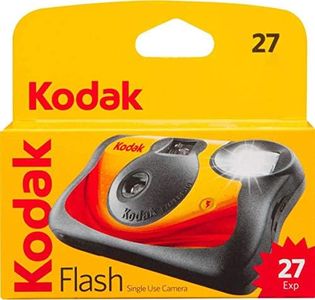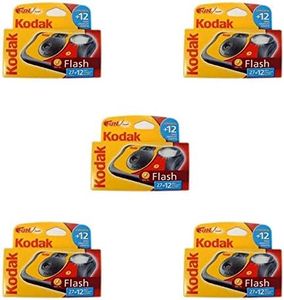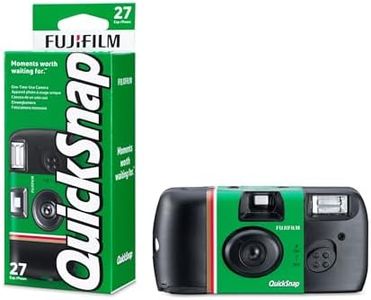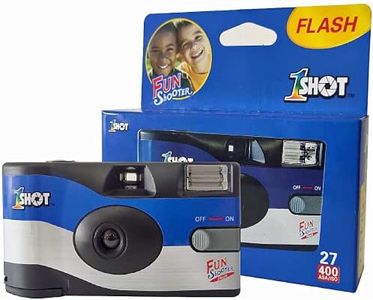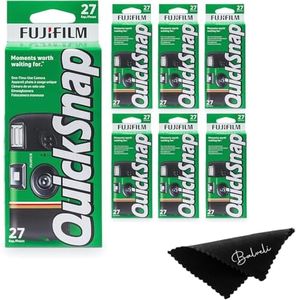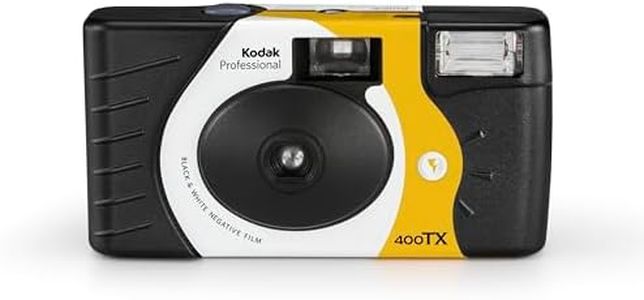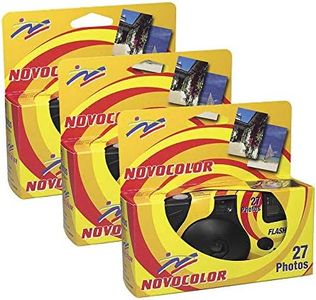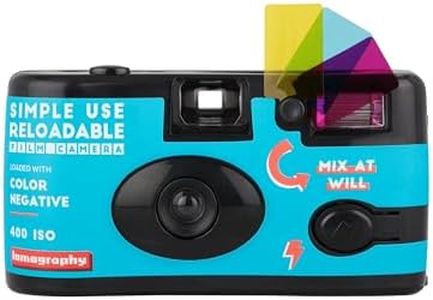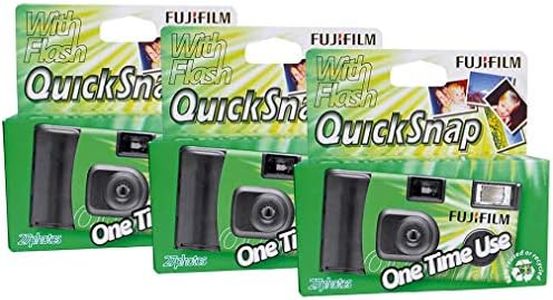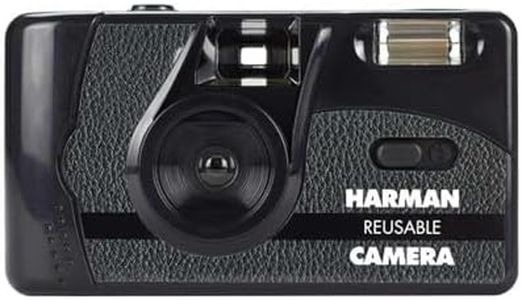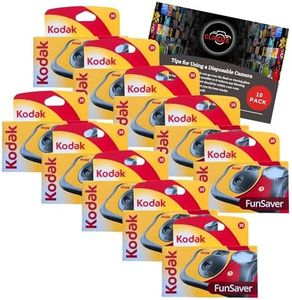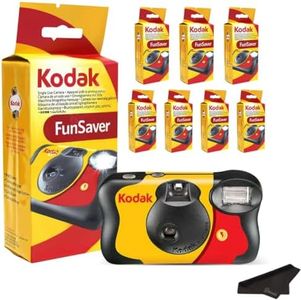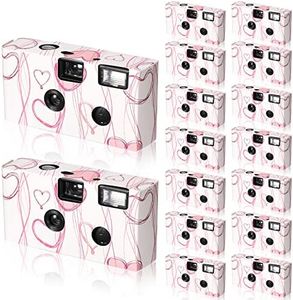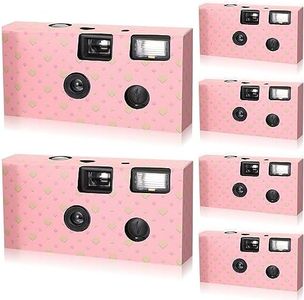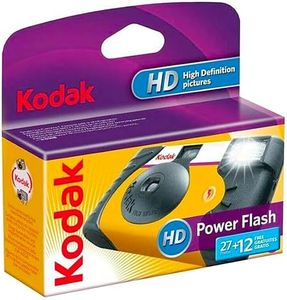We Use CookiesWe use cookies to enhance the security, performance,
functionality and for analytical and promotional activities. By continuing to browse this site you
are agreeing to our privacy policy
10 Best Disposable Cameras
From leading brands and best sellers available on the web.Buying Guide for the Best Disposable Cameras
Disposable cameras are a fun and easy way to capture moments, especially when you want a worry-free experience without stressing over expensive gear. They’re perfect for parties, trips, weddings, or situations where digital cameras or smartphones might not be practical. Choosing the right disposable camera comes down to understanding a few key features that affect how your photos will look and how convenient the camera will be for your needs.Film Speed (ISO)Film speed, often marked as ISO, indicates how sensitive the film is to light. A lower ISO number like 100 or 200 is less sensitive and works best in bright daylight, giving you finer, clearer pictures. An ISO of 400 is the most common, providing a good mix of adaptability for both indoor and outdoor settings, handling moderate lighting conditions comfortably. Some cameras may have ISO 800, which is more sensitive to light and better for low-light or action shots, but these can result in grainier pictures. Think about where you’ll be taking most of your pictures: for outdoor and sunny days, a lower ISO is great; for mixed lighting or indoor use, 400 or higher is a safer bet.
FlashA built-in flash can help brighten photos taken in low-light situations, like indoors or at night. Some disposable cameras always include a flash, while others do not. If you expect to take photos in dim environments, a flash is important to avoid dark and blurry images. However, in very bright settings or outdoors during the day, flash may not be necessary. Choose a camera with a flash if you want more flexibility and plan on using it at different times of day or inside.
Exposure CountExposure count refers to how many pictures you can take with one camera. Disposable cameras typically offer 24 or 27 exposures, though some go up to 36. More exposures mean more chances to capture memories before needing another camera, which is handy for longer events or trips. If you’re just capturing a few key moments, a lower count could be enough, but for longer outings or group events, more exposures offer better value and convenience.
Water-ResistanceSome disposable cameras are designed to be water-resistant or waterproof, letting you use them at the beach, pool, or even underwater for snorkeling. This is different from regular cameras, which should be kept dry. If you know you’ll be around water, look for a waterproof model to keep your camera safe and ensure your pictures turn out well. For typical everyday use, you likely don’t need this feature.
Lens Quality and Focus TypeThe lens quality and whether the camera has a fixed or variable focus will affect how sharp your photos are. Most disposable cameras have a basic fixed-focus lens, which means everything from a certain distance onwards should be reasonably clear, making them easy to use without any settings to adjust. Some feature minor enhancements for closer shots or better sharpness, but generally, if you want simplicity and snapshots of people and scenery, standard lens quality works well. If sharpness or closer detail is important to you, check if the camera has any special mention of improved lens or close-up focus capability.
